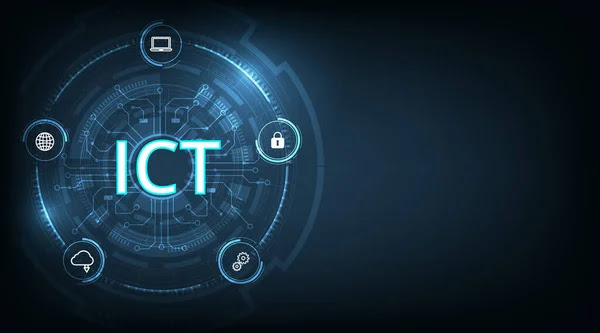To ensure the success of your website or online business, the development of a comprehensive blog strategy is crucial. Blogs play a pivotal role in enhancing websites and e-commerce platforms as they facilitate product/service promotion and information sharing, thus attracting more visitors.
To initiate your blog journey, securing web hosting is essential. Nevertheless, a well-structured blog strategy is instrumental in realizing your engagement, traffic, and conversion objectives. Wondering how to craft one? This article delves into the significance of a blog strategy and guides you through the process.
Key Highlights
- A blog strategy empowers bloggers to attain their content and monetization objectives by providing direction, enhancing efficiency and engagement, and targeting the right audience.
- The initial step in crafting a blog strategy involves identifying your target audience through methods such as market research, buyer personas, and social media analytics.
- The definition of content goals and objectives brings focus and clarity to the type of blog content you intend to create.
- When constructing a content calendar, brainstorm ideas, prioritize content based on importance, assign responsibilities, and monitor progress.
- Diverse methods, such as guest posts and social media, can be employed to promote your blog. However, it's crucial to track and measure blog performance.
Understanding the Essence of a Blog Strategy
A blog strategy is a deliberate plan and approach aimed at achieving your blogger goals and objectives. It encompasses topics, monetization plans, tools, target audience, content plans, promotional strategies, analytics, and success metrics. The strategy also outlines posting frequency and includes keyword research. A blog strategy is pivotal for several reasons, as elaborated in the subsequent section.
Importance of a Blog Strategy for Bloggers
For any blogger seeking to realize their goals, a well-structured blog strategy is indispensable. Here are the reasons highlighting the importance of a blog content strategy:
Provides Direction: A blog strategy offers a clear sense of direction by defining your mission, vision, and timelines. This clarity minimizes wasted time and enhances focus.
Enhances Efficiency: An efficient blogging strategy aids organization and optimization, including content calendar planning, SEO optimization, and social media promotion.
Targets the Right Audience: Your blog caters to a specific audience. Identifying this demographic using analytics, personas, and research ensures you engage the right readers.
Boosts Engagement: Intentional and strategic blog posts foster engagement by delivering valuable content that encourages discussions and educational dialogues.
Enables Measurement: The blog strategy serves as a yardstick to measure success, as it includes goals and objectives that can be ticked off upon completion. Metrics like traffic, engagement, and conversions are also tracked.
Phase 1: Identifying Your Target Audience
The initial step in crafting a blog strategy entails identifying your target audience. This process involves delving into audience behavior, characteristics, and preferences through research and analysis. Doing so facilitates content creation tailored to audience interests.
Importance of Identifying Your Target Audience
Your audience constitutes those who engage with your blog content. Defining them is essential to resonate with their preferences. This is critical as unappealing content can lead to a lack of success.
Different Methods to Identify Your Target Audience
- Analyze Existing Customers: Study existing customers to comprehend their pain points and preferences.
- Conduct Market Research: This yields insights into motivations and needs.
- Utilize Social Media Analytics: Gather data from platforms like Twitter, Facebook, and Instagram.
- Study Competitors: Analyze competitors to identify shared audience segments.
- Leverage Google Analytics: Use this tool to obtain visitor demographics and segment them.
- Gather Customer Feedback: Conduct surveys to understand content preferences.
Phase 2: Defining Your Goals and Objectives
After pinpointing your target audience, proceed to define your goals and objectives. This provides clarity on content direction, with goals ideally being SMART (Specific, Measurable, Achievable, Relevant, Time-bound).
How to Define Your Blog Goals and Objectives
- Based on Your Audience: Align goals with your audience's pain points and preferences.
- Consider the Purpose: Goals should align with your blog's purpose and objectives.
- Set SMART Goals: Craft Specific, Measurable, Achievable, Relevant, and Time-bound goals.
- Choose Relevant Metrics: Select metrics to measure goals, such as traffic, engagement, and conversions.
- Develop an Editorial Calendar: Create a calendar to track and achieve your goals.
- Monitor and Analyze: Regularly assess goals through analytics tools and make necessary adjustments.
Phase 3: Content Planning
Content planning is the subsequent step, encompassing topic selection, format, and scheduling. Brainstorm ideas, conduct keyword research, and develop an editorial calendar.
Different Types of Content to Include
- Educational Content: Offers valuable insights and tutorials.
- News and Industry Updates: Shares latest developments.
- Entertaining Content: Engages readers through anecdotes and humor.
- Product Reviews: Evaluates relevant products/services.
- Guest Posts: Incorporates external perspectives.
- Interviews: Provides insights from industry leaders.
- Visual Content: Uses images and infographics to convey information.
How to Plan Your Content Calendar
- Define Clear Goals: Set specific and measurable goals.
- Brainstorm Ideas: Generate topics aligned with your goals.
- Prioritize Content: Focus on content crucial for your audience.
- Create a Schedule: Set publication and promotion timelines.
- Assign Responsibilities: Delegate tasks among team members.
- Track Progress: Monitor performance using analytics tools.
Phase 4: Promoting Your Blog
Following content creation, focus on blog promotion. This involves utilizing various avenues such as social media, email marketing, and SEO strategies.
Importance of a Blog Promotion Strategy
- Increases Visibility: Promotions expand your blog's reach.
- Drives Traffic: Promotion efforts generate leads and engagement.
- Builds Brand Awareness: Consistent promotion establishes trust.
- Enhances SEO: Promotions boost search engine ranking.
- Builds Relationships: Engagement with audience fosters loyalty.
- Increases Social Proof: Continuous promotion enhances credibility.
How to Promote Your Blog
- Repurpose Content: Convert content into different formats.
- Create UTM Links: Use tracking links to monitor effectiveness.
- Guest Post: Collaborate with other blogs to increase exposure.
- Share on Social Media: Regularly post on platforms favored by your audience.
- Build Links: Develop backlinks from relevant sources.
Phase 5: Measuring and Analyzing Your Blog’s Performance
The final step involves measuring and analyzing your blog's performance through tracking metrics. This evaluation informs your blog's success and guides adjustments.
Key Metrics to Track and Analyze
- Traffic: Monitor audience behavior and interactions.
- Engagement: Track bounce rates, conversion rates, and social shares.
- Conversions: Determine conversion sources and rates.
- Social Media Metrics: Analyze follower growth and engagement rates.
- Backlinks: Monitor quality and quantity of backlinks.
- Keywords: Track and analyze keyword performance.
- Revenue: Measure earnings from various sources.
In conclusion, a winning blog strategy is pivotal for online success. It involves identifying your target audience, defining goals, planning content, promoting your blog, and measuring performance. With these steps, you can create a thriving blog that engages readers and achieves your objectives.


